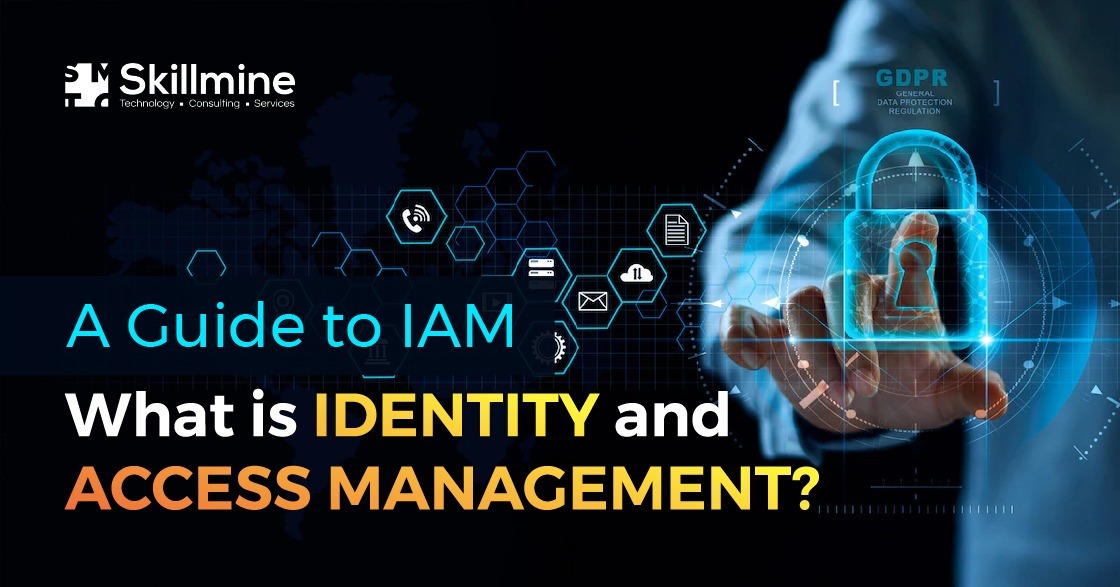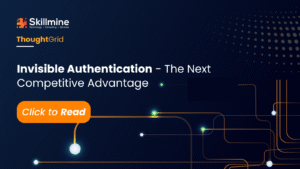A leading e-Commerce business had two conditions when they were looking to build, develop a secure and user-friendly authentication platform: Firstly, it shouldn’t burden users by lengthy authentication screens or processes. Secondly, it should offer a solution that guarantees the essential privacy and security safeguards.
Skillmine undertook a detailed analysis of the organization’s needs. After determining the requirements, a thorough analysis of technologies was carried out to determine the best fit solution. Skillmine Auth, an indigenously developed access management software was deployed to centralize the identity access management system of the business. This platform can give the firm the versatility needed, not only for the defined data/process flows, but also for the roadmap of the future.
What is IAM?
Identity and Access Management (IAM) is a centralized and uniform method for managing user identities (that is, persons, services, and servers), automating access controls, and adhering to compliance standards in traditional and containerized environments.
IAM is a part of the access control management solution which ensures that the right people have access to the right resources, especially when using numerous cloud instances. In order to reduce security or compliance risk, IAM frameworks are crucial for managing identities across bare metal, virtual, hybrid cloud, and edge computing systems from a single location.
Components of IAM
- Authentication: Verifying the identity of users, services, and applications.
- Authorization: Giving authenticated users access to specific resources or functions.
- Identity providers, secret vaults, and hardware security modules (HSMs): Allowing DevOps teams manage and safeguard security credentials, keys, certificates, and secrets, while at rest and in transit.
- Provenance: Confirming the legitimacy of a code or an image, using digital signature or attestation record.
Importance of IAM
Identity and access management is a crucial part of any company’s security program because it stands between users and important enterprise assets. It aids in preventing the usage of readily cracked passwords and compromised user credentials. These are frequent ports of entry for malicious hackers who seek to install ransomware or steal data.
If implemented properly, IAM contributes to ensuring business efficiency and the smooth operation of digital systems. No matter where they are, employees may conduct business as usual, and centralised management ensures that they have access to the resources necessary for their jobs. Additionally, allowing access to consumers, vendors, and suppliers can boost productivity and cut expenses.
Benefits of IAM
Here are a few benefits organizations gain by implementing IAM:
- All individuals and services are correctly authenticated, approved, and audited, and access privileges are distributed in accordance with policy.
- Lowers the danger of internal and external data breaches as businesses that handle identities properly have more control over user access.
- Enables businesses to function more effectively, by saving time, money, and effort required to manually managing network access.
- Makes it simpler to enforce rules surrounding user authentication, validation, and privileges.
- Assists businesses in adhering to legal requirements better by enabling them to demonstrate that corporate data is not being exploited. Companies can also show that any data required for audits is accurate.
How to choose the right IAM solution for your business?
There are numerous IAM solutions available; however, businesses can focus their search by using the following criteria:
- Audit all systems, both new and old, especially if you use both on-premises and cloud apps.
- Identify any security holes in order to protect both internal and external stakeholders.
- Define the various user categories and the corresponding access privileges.
It is time to deploy your IAM solution once you have defined the security requirements for your firm.
Conclusion
The domain of identity and access management has grown significantly due to the introduction of remote work. Insecure networks are bringing in a flood of new device connections, a flurry of requests for remote access to sensitive information, and the looming threat of web-based attacks. Skillmine Auth can simplify your identity management infrastructure, reduce the risk of unauthorized access and lay the groundwork for a highly flexible, cloud and container-capable operating environment.
Looking for expert technology consulting services? Contact us today.





